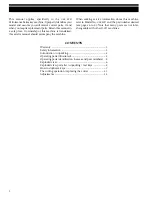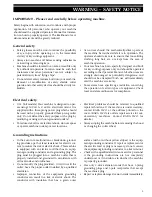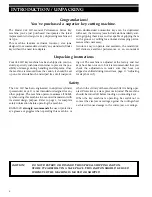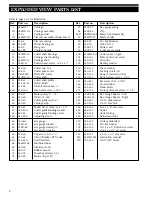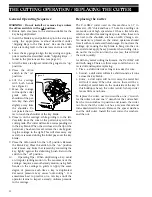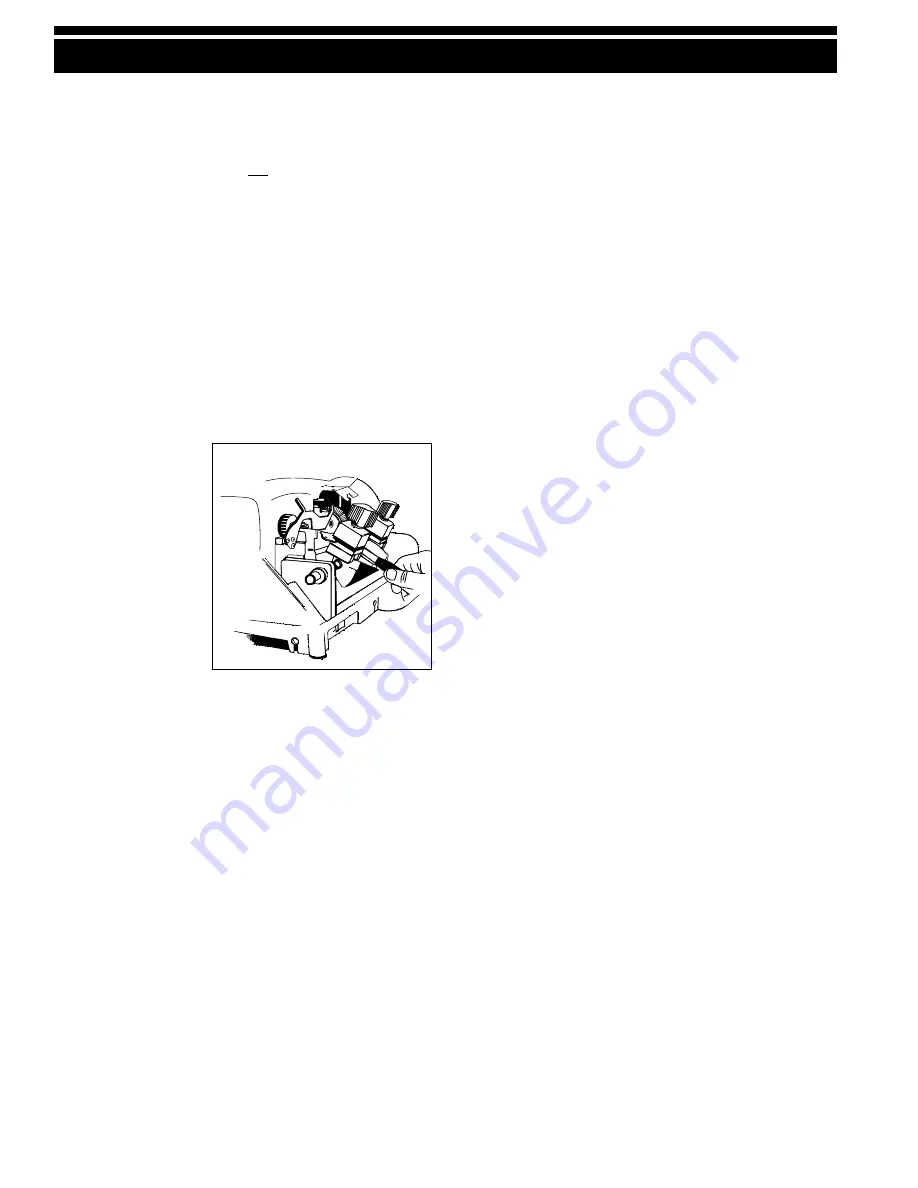
THE CUTTING OPERATION / REPLACING THE CUTTER
12
General Operating Sequence
WARNING: Do not install or remove keys unless
the off/on switch is in the off position.
1. Rotate both vise jaws to the station suitable for the
key being duplicated.
2. Insert the blank key and pattern key into the vise jaws
using the appropriate method described under
“Aligning Keys in the Vise Jaws”. Be sure that both
keys are laying level in the vise jaws and are not tilt-
ed.
3. Lower the key gauge to align the keys using an appro-
priate method as described under “Aligning Keys …”
found in the previous section (see page 10).
4. After the keys are aligned, return the gauge to its “up”
position.
5. Press the off/on
switch to the “on”
position.
6. Lift the carriage
with both hands
(see Figure 5).
7. Move the carriage
to line up the cutter
guide with the
shoulder of the pat-
tern key, then shift
slightly away from
the shoulder. Do
not permit the cut-
ter to touch the shoulder of the key blank.
8. Press in on the carriage, while guiding it to the left.
Carefully trace the cuts of the pattern key with the
cutter guide. The cutter will make a corresponding cut
in the key blank. When the cut closest to the tip of the
pattern key has been traced, retrace the cuts by guid-
ing the carriage to the right. This will clear away any
metal not removed during the initial pass over the key
blank.
9. Press the off/on switch to the “off” position. Remove
the blank key. Press the switch to the “on” position
and remove any burrs that remain by contacting the
key lightly against the deburring brush. Return the
switch to the “off” position.
10.
Operating Tips - When duplicating a key, avoid
an irregular jerking motion in the movement of the
carriage. Acquire a smooth steady motion, using both
hands on the carriage to guide it. Apply the same
degree of pressure each time a key is duplicated.
Excessive pressure may cause “over-cutting”. It is
sometimes best to practice on a few keys until the
operator learns to impart a steady, uniform pressure
to the carriage.
Figure 5
Replacing the Cutter
The P-23XMC cutter used on this machine is 2
1
⁄
4
” in
diameter, .093” thick and has a
1
⁄
2
” hole. It’s a milling cut-
ter, made out of high speed steel. It has a flat left side,
which is excellent for making deep cuts, when these cuts
are next to the shoulder, such as on GM, Chicago, etc.
No warranty is placed on the cutter, operators should
treat it with care and avoid harsh usage. Do not force the
carriage up, causing the key blank to bang into the cut-
ter, and do not apply heavy pressure when cutting. Also,
do not let the cutter run into the vise jaw; this will dull
the cutter quickly.
As with any metal cutting instrument, the P-23XMC will
dull with usage. There are three ways to tell when a cut-
ter is dull and requires replacing:
1. Time - a dull cutter takes longer to make the cuts.
2. Sound - a dull cutter will emit a shrill sound as it runs
across the key blank.
3. Burrs - a dull cutter will not cut away the metal but
will roll it away. When this occurs, there will be a
buildup of metal burrs on the underside of the key. If
this buildup is heavy, the cutter is dull. A sharp cutter
leaves little or no burrs.
To replace the cutter, use two wrenches, one
3
⁄
4
" wrench
for the cutter nut and one
1
⁄
2
" wrench for the cutter shaft.
Set the two wrenches in position and loosen the cutter
nut. Note that the cutter nut has a reverse thread and
turns downward to loosen. Remove the spacer washers
and the dull cutter. Install the new cutter, the washers,
and the nut.


